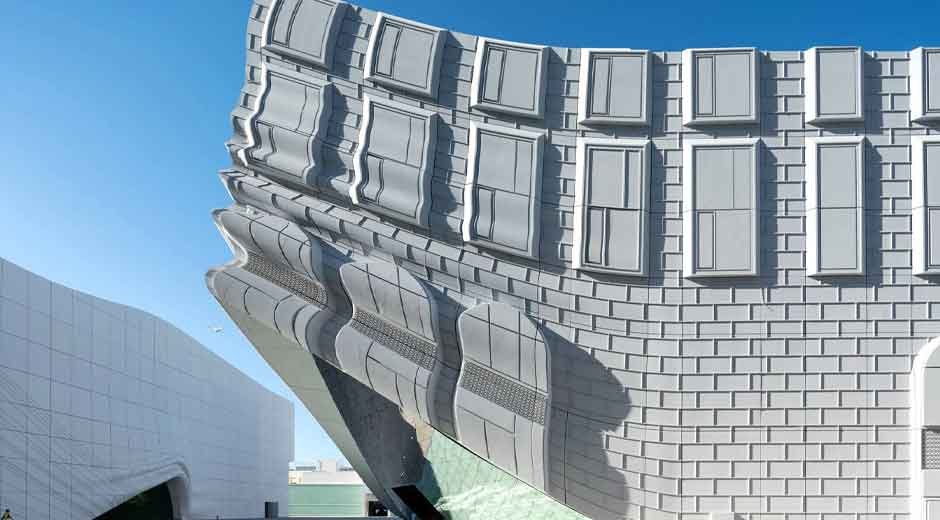Skip to the good bit
ToggleIn the constantly evolving world of construction and design, materials that combine strength, versatility, and sustainability are highly sought after. One material that’s capturing the attention of both designers and builders is Glass Fibre Reinforced Concrete (GFRC). This innovative composite has quickly moved from niche applications to mainstream construction, thanks to its wide range of benefits and aesthetic potential.
What Is GFRC?
GFRC, or Glass Fiber Reinforced Concrete, is a remarkable type of concrete that blends fine aggregates with alkali-resistant glass fibers woven throughout the mixture. These resilient fibers serve as a powerful reinforcement, significantly boosting the concrete’s strength and longevity while eliminating the necessity for conventional steel rebar. The outcome is a remarkably lightweight yet incredibly durable material that excels in both structural integrity and aesthetic versatility, making it an ideal choice for a wide range of applications, from intricate architectural features to robust construction elements.
Why GFRC Is Gaining Popularity
The surge in GFRC use across residential, commercial, and public projects isn’t coincidental. Here are a few reasons why this high-tech material is rising in popularity:
- Lightweight Yet Strong:
Traditional concrete is heavy and cumbersome, often requiring significant structural support. GFRC, however, is much lighter, which reduces transportation costs and simplifies installation. Despite its lighter weight, it maintains impressive compressive and flexural strength, making it suitable for a range of applications.
- Highly Malleable:
GFRC can be molded into nearly any shape or texture, allowing designers to push the boundaries of creativity. From sleek, modern facades to intricate decorative panels, it enables customisation that standard concrete can’t easily achieve.
- Durability and Weather Resistance:
Thanks to its composite structure, GFRC is less prone to cracking and shrinkage than traditional concrete. It also holds up well against extreme weather, moisture, and UV exposure, making it ideal for both indoor and outdoor use.
- Eco-Friendly Choice:
GFRC uses less cement and fewer raw materials compared to traditional concrete. Its lighter weight also results in lower emissions during transport. As sustainability becomes a higher priority in construction, GFRC offers a responsible alternative without compromising performance.
In the midst of this growing trend, many construction professionals are turning to trusted suppliers for innovative solutions. For instance, glass fibre reinforced concrete products from experienced manufacturers provide the quality and reliability needed for ambitious design projects.
Where GFRC Is Being Used
You’ll find GFRC in everything from building facades and cladding panels to custom furniture, public art installations, and even countertops. Its use in architectural precast panels has especially surged due to its lightweight nature and smooth finishes, which make it perfect for modern buildings aiming for visual impact and structural integrity.
The Future of GFRC
With ongoing improvements in production techniques and growing awareness of its benefits, GFRC is set to become a staple material in both architecture and design. As more professionals prioritise aesthetics, durability, and sustainability, GFRC ticks all the right boxes.
Whether you’re a builder aiming to streamline installation or a designer envisioning something bold and contemporary, GFRC offers a smart, future-ready solution that’s hard to ignore. Its rising popularity is no trend—it’s the future of concrete, reimagined.







